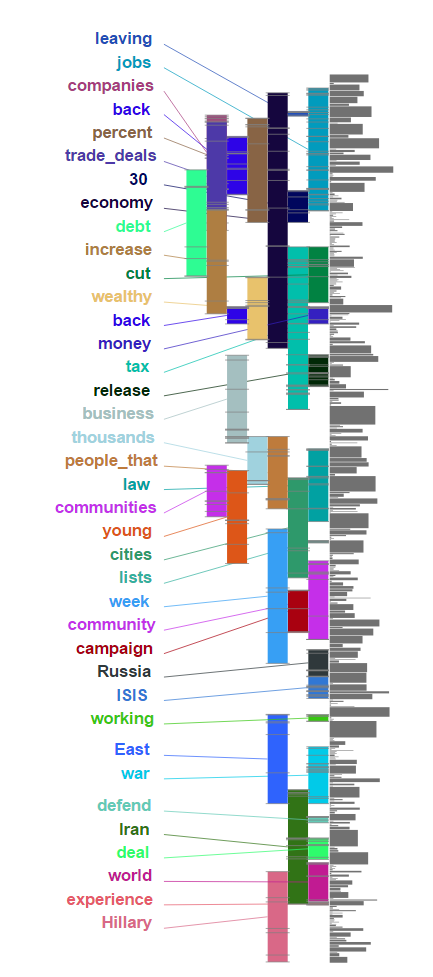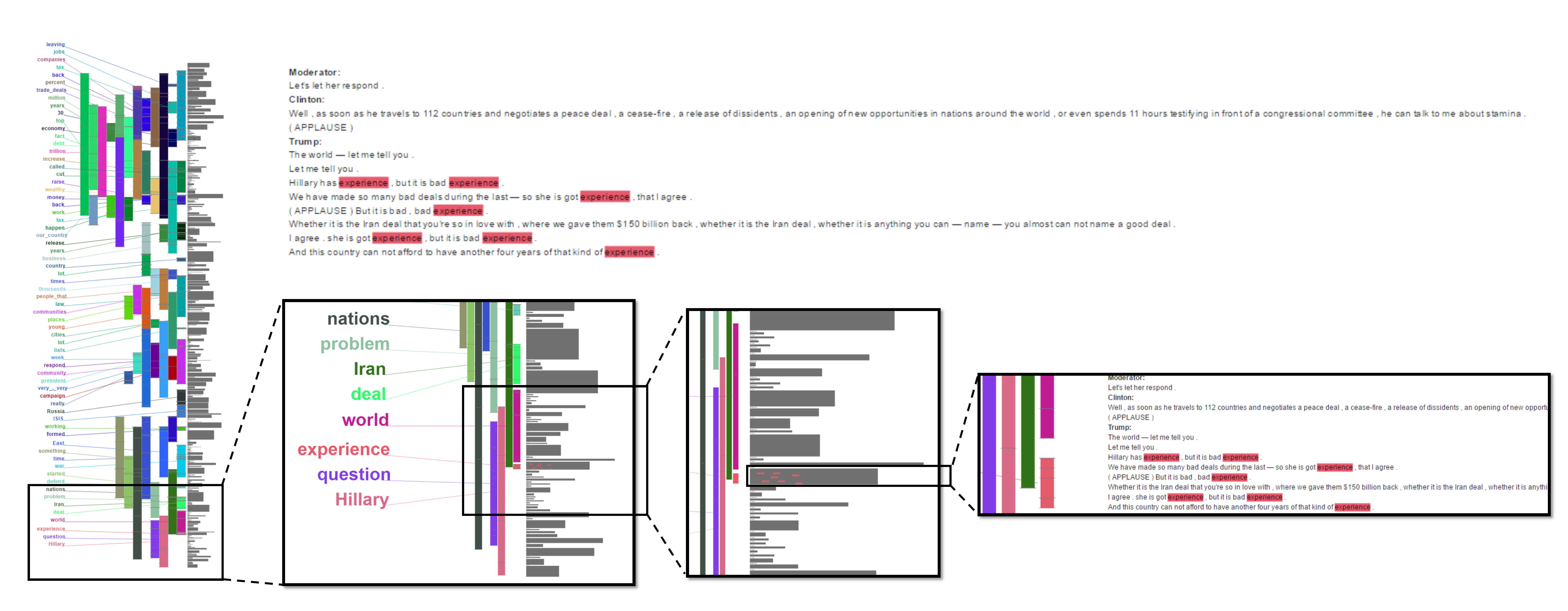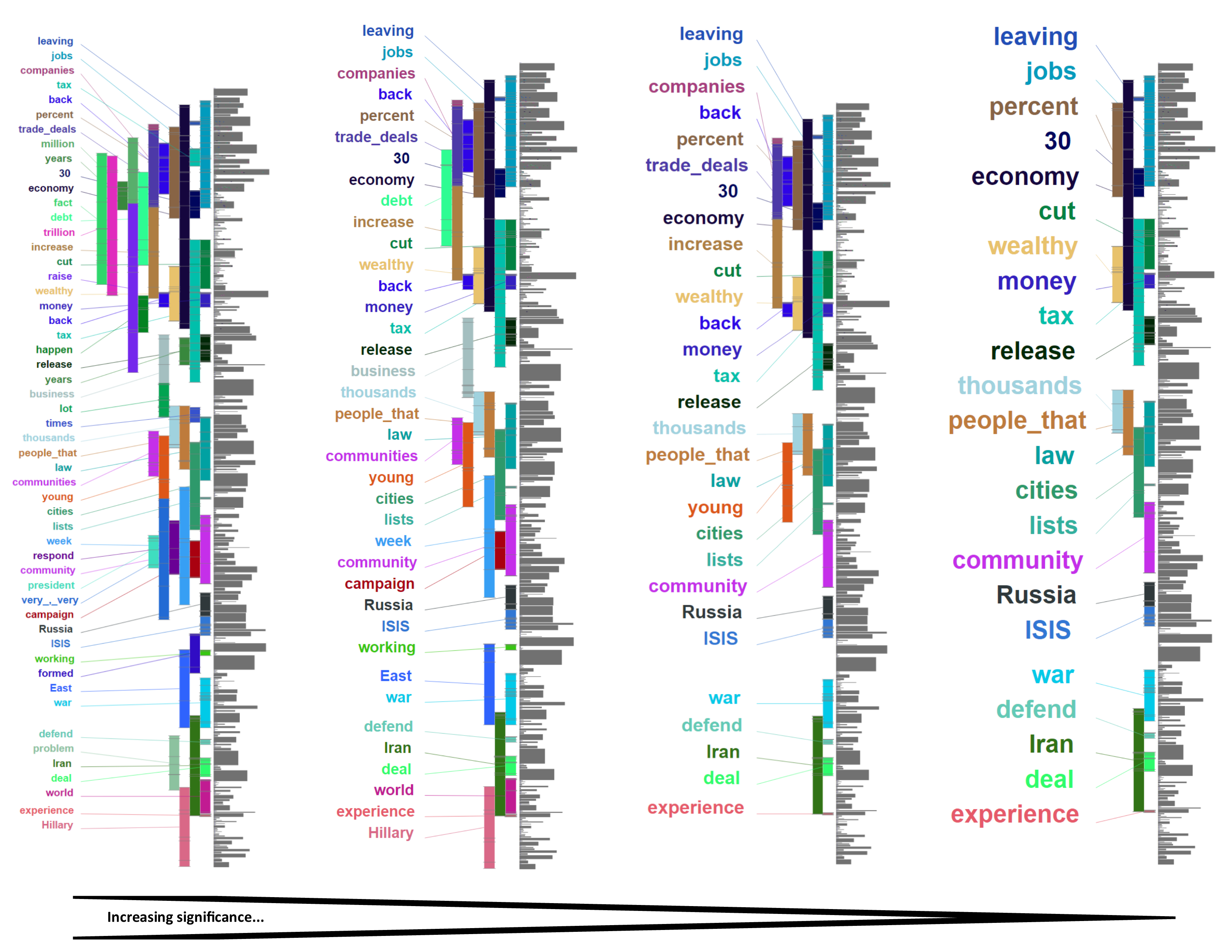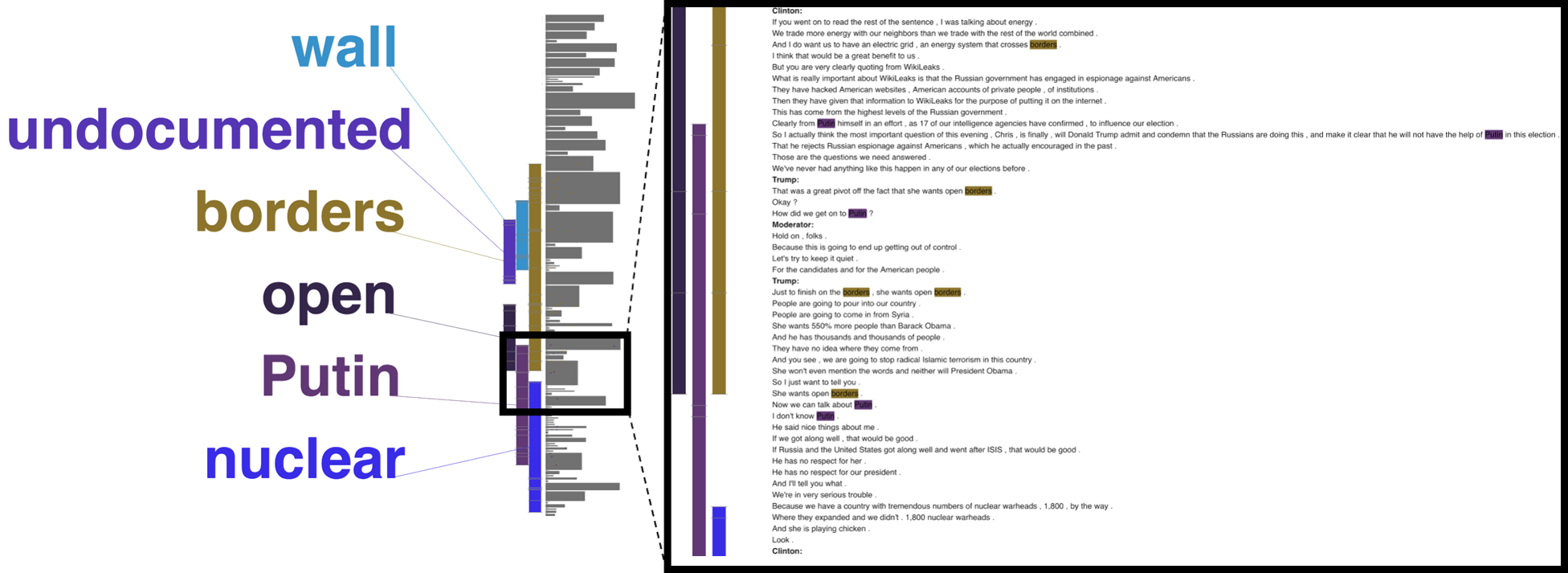Content Overview
In order to get a high-level overview of the content of the debate and the order in which topics are discussed, we use Lexical Episode Plots. This visualization technique is based on the concept of lexical chaining. Hereby, we compute word-chains that appear with a high density in a certain part of the text and determine their importance through the compactness of their appearance. These episodes are visualized as bars on the left-hand-side of the text. Horizontal lines on each episode-bar indicate its appearance in the text. The text is shown on the right and each utterance (speaker-turn) is abstracted by one box with each sentence as one line. This visualization supports a smooth uniform zooming from the text level to the high-level overview, which enables both a close-reading of the text and a distant-reading using the episodes. In addition, a user can interactively select episodes which get highlighted in the text with the same color for the episode.

Lexical Episode Plots
Lexical Episodes are defined as a portion within the word sequence where a certain word appears more densely than expected from its frequency in the whole text. For example, if the text contains 100 words and a certain word appears four times within the whole corpus, we would assume -with an equidistant distribution- that this word would appear every 25 words in the text. However, if the actual distribution of this word is more dense in a certain part of the text, we define this as an episode.


In addition to zooming and highlighting, the user can interactively change the level of detail in the visualization by changing the significance level of the episode detection. In the figure below, the first debate is visualized with four different levels of detail, increasing the significance from left to right to filter for more compact - and potentially more important - episodes. It is interesting to follow the main themes of the conversation and detect some unexpected outlier words within the debate. In contrast to other debates we have analyzed, this debate indicates a lot of repetitions within the same area in the text. This is mostly due to the rhetorical style of Trump, repeating words like: "our country", "experience", "people that", "very very", and "30" (referring to Clinton being involved in politics for 30 years).

In the following, we want to highlight some of the findings based on the Lexical Episode Visualization. In general, the visualization leaves the interpretation to the researchers, so please note that the findings most likely allow for more than one visual interpretation.
Second presidential debate
We can use the visualization of the second presidential debate to disentangle rhetoric elements. With an increase in the level of detail, these rhetorical elements are visualized. For instance, Trump uses the phrases "We're going to make America great again.", "We're going to make America safe again.", and "We're going to make America wealthy again." several times to emphasize his agenda. If we go into detail and highlight these words in comparison to the original topic (women), we see that these phrases are used as rhetorical elements to switch the topic and present the audience with something to remember.

Third presidential debate
For the third presidential debate, we highlighted a section in which the candidates - probably unintentionally - slipped into a different topic. In the example presented below, orginally, the moderator asked the candidates to present their ideas on immigration. This can be seen in the figure by the words "wall", "undocumented (immigrants)", "open", and "border". In the presented turns, the moderator first introduced a quote from WikiLeaks to the debate. Even though this quote relates to the topic of immigration and open borders, Clinton eventually referred to the Russian government and Putin as being responsible for the WikiLeaks hacks. She then forwarded a (rhetorical) question to the audience to aks for Trump's position towards Russia and Putin. Both, Trump and the moderator seemed to be surprised about this change of topic but the moderators agreed to continue and give Trump the chance to respond to the question by Clinton.
